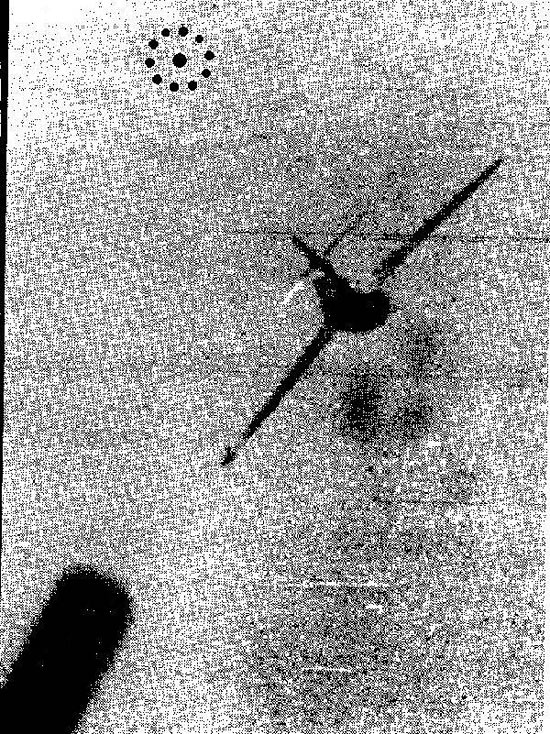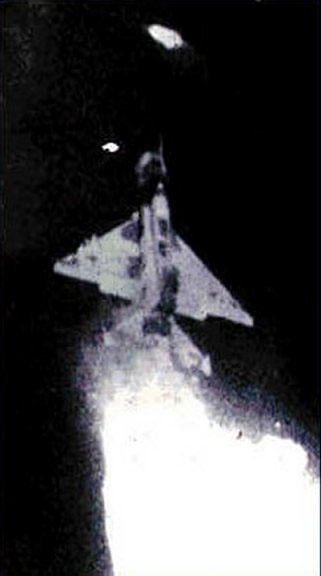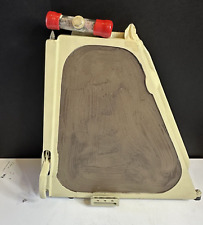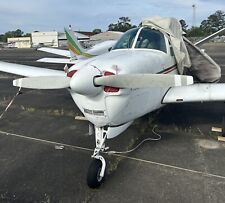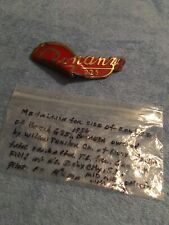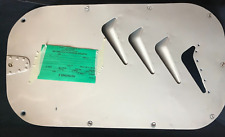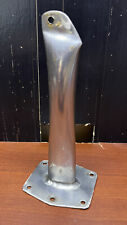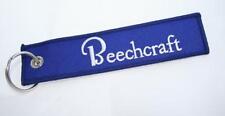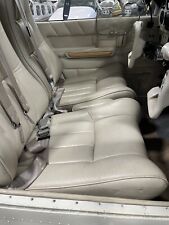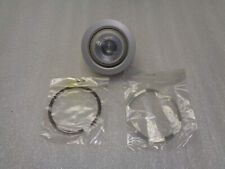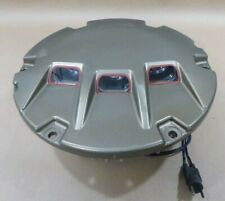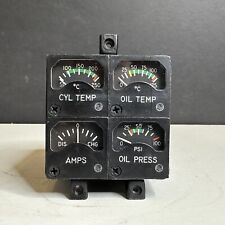OK!! Enough of that stadiametric stuff. Let’s get back to our review of fixed sights.
One problem that pilots had with using the ring and bead sight was that the pilot’s head had to be held perfectly still when lining up the ring and bead. This was hard to do while maneuvering. A solution to this problem was the telescopic sight. This sight was essentially a tube with the ring on one end and the bead on the other. By leaning forward and looking through the tube, the pilot was lining up the ring and bead with his head in the proper position.
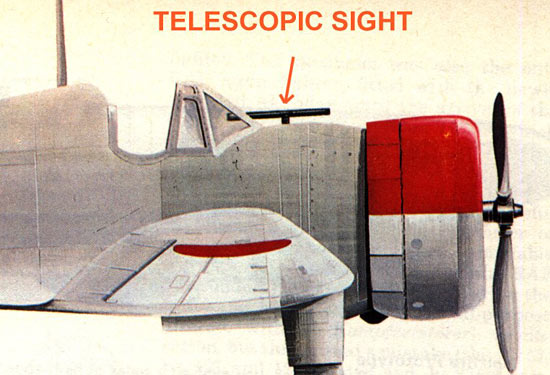
The technique in using the telescopic sight was identical to the ring and bead sight. The pilot had to maneuver behind his target. Then looking through the telescope to see the ring image, he would make the final pitch and roll corrections to superimpose the ring over the target (this must have been a lot of fun in a hard maneuvering fight…I don’t know how those guys did it!!). But technology marches on, and by the time WW2 had begun, the ring and bead sight was being replaced with the ‘reflector sight’. The next picture shows a Spitfire cockpit and its reflector sight.
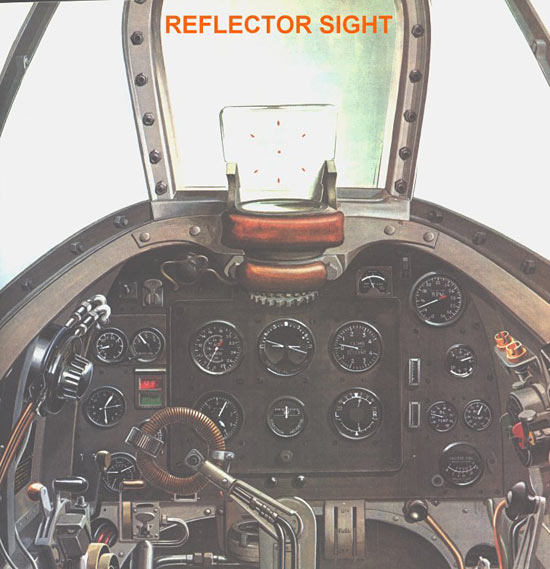
The reflector sight was just a ‘high tech’ ring and bead sight. The reflected image was focused at infinity, and represented the gun line. The main advantage of the reflector sight was that it was always ‘in alignment.’ This allowed a small freedom of movement of the pilot’s head, whereas when using the ring and bead sight, the pilot had to hold his head perfectly still when aligning the sight with the target.
The reflector sight got its name from the fact that the gunsight image was reflected off a pane of glass towards the pilot’s eyes. This pane of glass was called the ‘combining glass’ because it ‘combined’ a light image formed by a gizmo under the front glare shield. The combining glass looks like a small HUD. The only difference between a combining glass and a HUD is that the HUD contains more info than just a gunsight reticle.
That covers the operating principles of the various types of fixed sights. Next, a few words about how the fixed sight was meant to be used.
Fixed Sight Implementation
From WW1 onwards, everyone agreed that there were two types of air to air gunnery attacks…low angle off and high angle off. The low angle off attack was by far the easiest for the average pilot to learn. This type of attack had the highest probability of success in that it maximized the desired aspects of fixed sight gunnery. Those desired aspects were minimum required lead angle and maximum exposure of the target to the line of fire.
This preference for a low angle off attack had a direct impact on fighter tactics. The concept of Basic Fighter Maneuvers (BFM) was developed, and the primary purpose of offensive BFM was to maneuver to the target’s six o’clock…or prevent the bandit from getting in your six o’clock in the case of defensive BFM. If you have ever wondered why traditional BFM references all seem to be oriented to maneuvering behind the target, this desire for a low angle off gun attack is the reason why. In today’s world of beyond visual range (BVR) all aspect missile employment, we tend to reduce the emphasis on traditional BFM, but in the days of the fixed sight, this was certainly not the case.
The next point in general agreement was that the fixed sight became increasingly less useful as range increased regardless of the angle off. The solution was to emphasize short firing ranges. The gunsights were designed to allow the pilot to estimate range using the size of the gunsight reticle (stadiametric ranging), and the guns were installed in the aircraft to focus their lines of fire in a concentrated manner at a desired short range (harmonization).
The result was that the desired attack was a low angle off, one G firing situation. This worked very well against a target that didn’t see you coming, and, historically, most kills were of this type. But, once the target started maneuvering, then all bets were off. The next figure shows a Me-110 at relatively high angle off. This situation will require a fair amount of lead…called ‘deflection shooting’ during WW2. It took a skilled pilot to use a fixed sight effectively in gun attacks of this type.
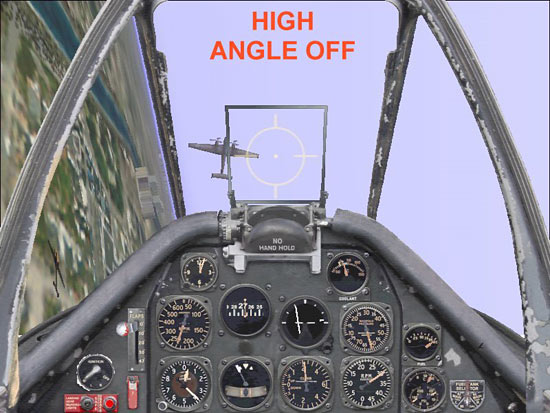
For the pilot to use the fixed sight against a turning target required a fair amount of pilot ‘guess-timation.’ Not many fighter pilots were very good at this. What was needed was an aiming reference that took into account target motion. This need happened to coincide with WW2, and the demands of the war soon resulted in improved sight systems on both sides of the conflict. The first improvement came in the form of the gyro-assisted lead computing sight…the first of several designs all falling under the category of Lead Computing Optical Sight Systems (LCOSS). The term includes the word ‘system’ because the concept is made up of a sight display (HUD), several computers, and, in later models, a ranging device (radar or laser).
In the introduction, I said that I was going to discuss each gunsight type with reference to the degree of target info the sight had available for use. Clearly, the fixed sight, since it receives no input on the target, does not take the target’s position into consideration. Instead, you, the shooter, have to do this all by yourself. With the ring and bead sight, the shooter was provided only an indication of the one G gun line. Through the use of a specifically sized reticle, the pilot could estimate range using the stadiametric principle…but that was about it. Against a turning target, the lead angle computation and correction for gravity drop were strictly a function of individual pilot expertise…or as often was the case, the lack thereof.


